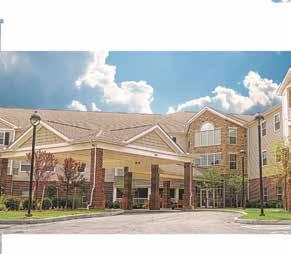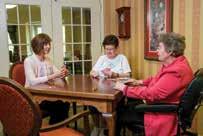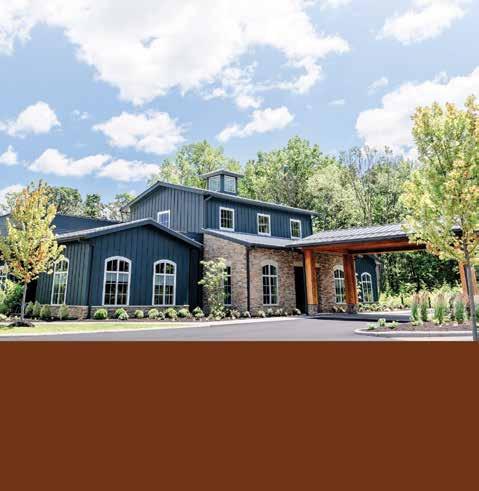
5 minute read
Broadband Impact
5G to make positive impact in health care
There may not be any evidence that 5G technology impacts your health, but there is evidence that the technology will soon make an impact on the health care world.
In telecommunications, 5G is the next generation of mobile broadband that will replace or complement 4LTE, bringing faster download and upload speeds and reducing the time it takes for devices to communicate with wireless networks.
“5G has the potential for profound change because of speed – what takes six minutes to transmit with 4G is reduced to less than four seconds,” Pedro Pereria writes in a blog post for the Computing Technology Industry Association.
Mobile carriers have already begun rolling out the technology in select cities over the last few years and as the technology picks up speed, experts expect the technology to positively impact the health care system.
“5G technology will help turn antiquated health care systems in hospitals into smart hospitals that can deliver remote health care services to patients around the world,” Marco Stracuzzi writes in a blog post for software company Telit.
Stracuzzi says 5G is expected to grow the telehealth market, citing a prepandemic study that the telehealth market is expected to grow at a compound annual growth rate of 16.5 percent from 2017 to 2023.
“Faster network speeds and the quality of care will allow doctors to engage remotely with patients at home or in field hospitals without the worry of network blackouts, disconnections or lag time,” he writes. “In the aftermath of the coronavirus pandemic … the tech-
nology will enable remote support of quality health care while reducing patient exposure to contagion by minimizing inperson visits to the doctor or health care facilities.”
“For patients who can’t easily travel to their healthcare providers, 5G will allow the provider to visit them via naturalfeeling telepresence systems,” Stracuzzi writes.
For 5G coverage to work for health care, the technology will need to provide 10 to 100 times faster speeds than a typical 4G cellular connection in remote areas and at the site of care delivery, Adam Oldenburg writes for HealthTech magazine. 5G will help facilitate the transfer of large pieces of data files including medical records that may contain MRI and CAT scans.
“Adding a high-speed 5G network to existing architectures can help quickly and reliably transport huge data files of medical imagery, which can improve both access to care and the quality of care. At the Austin Cancer Center, the PET scanner generates extremely large files – up to one gigabyte of information per patient per study,” according to an update from mobile carrier AT&T.
“To get that much data from one side of the town to another, you’ve got to have the network performance to handle it,” says Jason Lindgren, chief information officer of Austin Cancer Center. “We used to have to send the files after hours. Now as soon as the patient leaves the scanner, the study is already on its way. It’s beneficial to doctors because they can get the results that they need quicker.” 5G could improve the use of wearable technology and allow doctors to monitor remotely and in real time a patient’s data for preventive care and other tailored provisions.
Sixty-five percent of consumers and 86 percent of doctors agree that wearables increase patients’ engagement with their health, and decrease hospital costs by 16 percent, according to a study released by multinational company Accenture.
“Patients with chronic conditions can also retain autonomy and improve outcomes with more reliable, always-on mobile personal emergency response systems,” Stracuzzi says.




The assistance you need, when you need it
New Albany Rehabilitation, Skilled Nursing & Assisted Living Center offers well-appointed senior apartments, housekeeping, meals and personal care and support services as needed.



• Private apartments and suites • Beautiful courtyards with walking paths • Well-appointed dining room, restaurantstyle meals, room service and snacks • Transportation • 24-hour professional nursing staff • Health and wellness monitoring • Medication management • Assistance with bathing, dressing and grooming • Physical, occupational and speech therapy available • Podiatry, dental, optometry and psychological services
For more information on our services call 614.855.8866 5691 Thompson Road Columbus, OH 43230 or visit our Website: www.macintoshcompany.com/new-albany
New Albany Rehabilitation, Skilled Nursing & Assisted Living Center A Macintosh Community
Personalized. Uncompromised. Healthcare.

Such connected technologies, however, are “largely limited by the capacity of the network to handle data,” Ron Malenfant, lead global architect for 5G at Cisco, told FierceHealthcare in 2019. “5G will enable more reliable connections to facilitate the data transfers workers need to make quick health care decisions remotely for more patients.”
In addition to wearable technology, 5G could lead to the widespread use of medical sensors, Stracuzzi says, that will allow patients to measure and monitor their health at home.
“These do-it-yourself innovations in health care will calibrate, gather and validate data from trusted sensors. The data can then be transmitted to a variety of medical and health care professionals for analysis,” he says.
In its 2017 report, software company Qualcomm highlighted how far sensor technology had already come. It mentions one sensor, submitted in a medical device competition earlier that year, could fit in the palm of your hand, was as user-friendly as a smartphone, and could diagnose and interpret 13 health conditions.
“This was a major advancement, but one sensor alone really isn’t enough. The combination of numerous patient (internet of medical things) devices and sensors helps doctors provide a complete health picture for their patients, leading to a personalized health treatment program,” Qualcomm says.
Since the onset of COVID-19, experts have debunked conspiracy theories that 5G signals were a cause of the virus.
“The frequencies of 5G waves are so much lower in power and still four orders of magnitude, or 10,000 times less, than ionizing waves, which are known to possibly be carcinogenic in large doses,” Ted Rappaport, an electrical engineer, told USA Today.
“It’s important for people to realize that the ultraviolet waves from the sun are many thousand times higher frequency than 5G. People should be more concerned about wearing sunscreen outside than using their 5G cell phones,” he adds.
Brandon Klein is the editor. Feedback welcome at bklein@ cityscenemediagroup.com.










